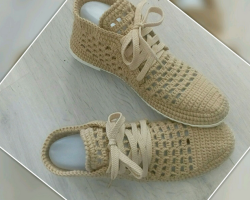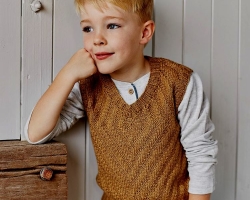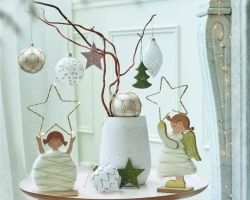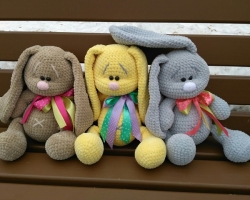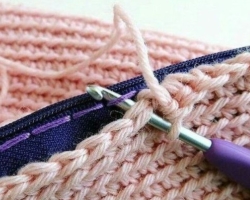If your son is still a young man (4-5 years old), then an incredibly charming gnome can be made of it-funny shoes, a cap with a bell and a dressing beard will turn it during the New Year's holiday into this beloved by all children of a fairy-tale character. Especially if you plan to make this masquerade costume yourself. A boy dressed in such a suit will certainly decorate the New Year's matinee in the kindergarten or a family holiday with his presence, because you will make it with love, and not banally acquire somewhere in the store.
Content
There is another important aspect in creating a gnome costume with your own hands - this is saving funds, because sewing such a suit will cost you many times cheaper than its store analogue. Decided on the magical transformation of your son into a gnome? If so, in this case, be patient and materials, choose the time, and, following our instructions and patterns, proceed to conjure over the suit. And believe me, this is not so difficult as it might seem at first glance.
How to decide on the size of the gnome costume?
- Measure your son. If he has a height of 98 or 104 cm (approximately), then in this case you can use our two patterns given below.
- If the dimensions do not match, do not despair! In this case, you can sew a suit of a larger or smaller size, taking as a basis one of our templates.

New Year's costume gnome for a boy: fabrics and tools
Before sitting thoroughly for creating a gnomic costume, get out:
- green with dense fabric (0.5 m) - shoes and vest will be sewn from it. Velvet fabric is perfect for this purpose;
- red cloth (0.4 m) - a cap will be sewn from it;
- non -woven (adhesive tissue) - 0.5 m;
- oblique inhibitory (color does not matter) - 1.5 m;
- threads "grass" (1 skein) - a beard will be connected from them;
- white threads (1 skein) and red (1 skein) - leggings will be connected from them;
- buttons (four pieces, if the child’s growth is 98 cm, five, if a height is 104 cm);
- two sewing buttons - they will be needed in order to hold a beard;
- tracing paper or paper for patterns;
- bubenchiki in the amount of three pcs. (two of them should be small - we will decorate the shoes with them; and one slightly large size - it will be placed on the cap);
- centimeter (flexible measuring tape);
- ruler;
- scissors;
- knitting needles No. 3 and hosiery knitting needles in the amount of five pcs. for knitting in a circular;
- a sewing machine, an overlock (Zigzag is also suitable);
- monophonic T -shirt and shorts.

How to make a gnome costume with your own hands: phased instruction
Vest
Consistently undergo such operations:
- On tracing paper or ordinary white paper, draw two patterns - for the back and front (shelf) and cut them with scissors.
- Fold the dense fabric of green. To the place of its bend, pin the back cut out of tracing paper (paper) with pins, and next to it - a shelf. Cut the material.

- Next, take the backbone - scissors do cuts of cuts with a length of 5 mm you drawn on the pattern on the pattern. The side seams of the back and front of the vest will be combined on them.

- Get rid of paper patterns. Take the non -woven and cut two stripes from it (6 cm wide 38 cm wide each), and then glue them with an iron to the wrong side of those places of the planks where the button will be located on one side of the button, and on the other - the loops. If these places are not strengthened by non -woven, then the shelves can stretch and skew.

- Look at the paper pattern of the shelf: its middle should be outlined on it (approximately 3.5 cm from its edge). On the wrong side of the shallow side or a remnant, draw this vertical line on the fabric, and then walk along it with a needle with a thread with a point seam. Do such an operation with both shelves. The middle of the shelves and on the front side will be visible on these stitches.

- Log over both trims on a wrap so that the front side turns out to be on top, squeeze them and pull them out - you will no longer need it.
- Now you will need an overlock or “zigzag” for the mark of the shoulder, side seams of the back and front of the vest - all these parts must be processed separately.

- Sew the lateral and shoulder edges with a sewing machine so that the shading you cut off are compatible, and then defeat all the seams with an iron.
- To process the armhole, you will need a slanting box. Take a centimeter and measure it to them. Add three centimeters to the allowance to the resulting circumference, draw it on the fabric and cut it with scissors - you should get such a pattern that the edges of the material will be overlap on each other.
- Wet it to the armhole, and then stitch it on the machine on the machine.

- Bend the inhibitory and detach the edges by about 1 mm by its face - this should be done for an even roll. Then, manually, the remaining edge of the box to the armhole, and then stitch and remove the mark. Do the same manipulations with the second armhole.
- With the same sequence, treat the head and neck. Only in this case, bend the bar along the line of the note on the front side of the shelf, and then sign the workpiece cut out of the box - so you can get its tip under the bar. Stitch on the machine to the neck on the line on the line of the wandering, and then turn out the corners of the bar. Put the second end of a circle carved from the box and already finally set it up to the neck. Now pick up the iron in your hands and reward the circumference of the neck and the armhole.

- Treat the bottom of the vest: bend the bar along the line that you outlined on the front side, and then grind, retreating from the edge by three centimeters. Then turn out and stitch throughout the bottom of the vest.

- Finish the manufacture of a vest with punching loops and sewing buttons. To do this, transfer the marks from the pattern where the loops will be located. Sove their length on the vest, and then trim and treat them with a machine. If your button is in a diameter of 2 cm, then the length of the loop should be about 2.5 cm.

- Sew the buttons and squeeze your product - is it not true, it turned out no worse, or even better than a store option?

Cap
- You can sew the cap according to our pattern that needs to be transferred to a sheet of paper. The pattern is given at the rate of 49-cm of the volume of the head; In case of need, increase or reduce the pattern yourself.

- Cut it and attach it with pins to a fabric folded in half, and then cross out the fabric blank for the cap.

- Propine the upper part of the headdress from the wrong part using non -woven - then it will preserve the shape. Combine the edge of the cap and sweep them so that they do not disheve.

- Bend and iron into the inside of the lower edge of the cap and stitch along the entire volume of a finishing line.
- Sew a bell on the edge of the cone of the cap, and on its lower sides - buttons to which a removable beard will be attached.

Try the finished cap for the child - let it have fun in front of the mirror.
Beard
- Your bound beard will have an almost natural look. Take the knitting needles and a skein of white threads - and soon your baby will also get a beard in a couple to the cap.
- Type 60 loops on the knitting needles - they are enough for any height, because the related canvas can be stretched if it is required.
- Knit 4 rows with facial loops.
- The beginning and end of each second row knit 2 loops together.
- Continue to knit in this way, while only 5 loops remain on the knitting needles, knit them all together, thereby completing the process of creating a beard.
- Hide the end of the thread, and then sew the rest of the buttons to both sides of the upper part of the beard (you have already attached another to the cap).

Shoes
- Transfer to a sheet of paper the parts of the shoe patterns (sole and top of the shoe).

- Pin them with pins to the dense fabric and cut off four parts for the upper parts of the shoes and two soles. If you make shoes made of soft fabric, glue it from the inside with non -woven.

- Save the edge of the rear seams of shoes and grind them on a typewriter, but it is necessary that small cuts remain at the upper part. If we count from the lower part of the shoe, then the seam should turn out 4 cm of length.

- Pin the upper part of the shoe to the sole and stitch them together. Subtract all the edges.

- Bend the entire edge inside one and a half centimeters and stitch it on a typewriter, and then turn it on to the front side. Sew small bells on the nose of shoes.

Gaiters
- Type 40 loops on the knitting needles - use a red thread for this. Distribute them so that on 4 knitting needles there are 10 loops, and in a circle of the fifth knitting needle, knit 5 rows with facial loops. And then knit already with a white thread.

- Stitch in this way (with alternation - either red, then white thread) 40 rows, and add to 41 one loop in the middle of each knitting needle. Now each knitting needle should have 11 loops, the total number of loops - 44 pcs.

- Repeat such actions 10 rows after you added loops for the first time, and then after another 10 rows. In total, 13 loops should turn out on all four knitting needles; The total number is 52 pcs.
- The seventieth row should crown the hetter with a strip of red. But it should be decorated with a beautiful patterned edge. To do this, knit five rows with the facial loops, and the subsequent row in this way: 2 together with facial loops; crochet; 2 together with facial; crochet. Complete the last 5 rows with knitting the facial loops; Then with crochet, and again knit the front loops.
- Close the loops so that the hetras do not blossom.

- Bend the edges into the leggings - focus on the holes that formed from the uniform loops, then the top will be decorated with a patterned edge. Take a needle with a thread and fix the edge to the base of the heter.

- In the same way, tie the second lecture.
For a complete image of a gnome, you will need a white T -shirt and dark shorts - they can probably be found in the wardrobe of every minor disorder. If there are no newcomers, buy them, since it is impossible to do without these details of the costume. But if there is such a desire, you can sew them yourself.

Try it a ready -made gnome costume for your boy, and you will see for yourself that he will be the most brilliant at the festival!
We will tell you how to sew a suit:


